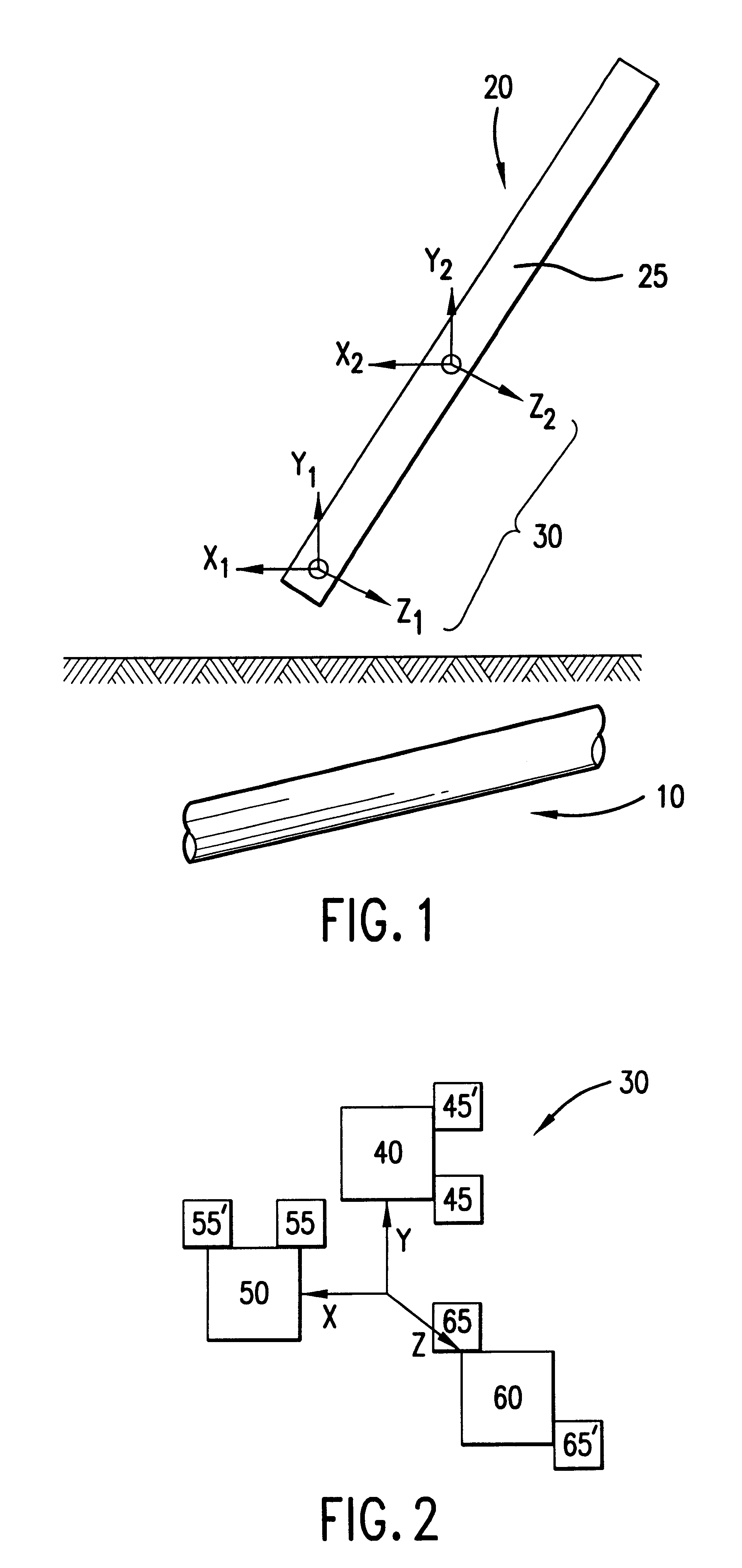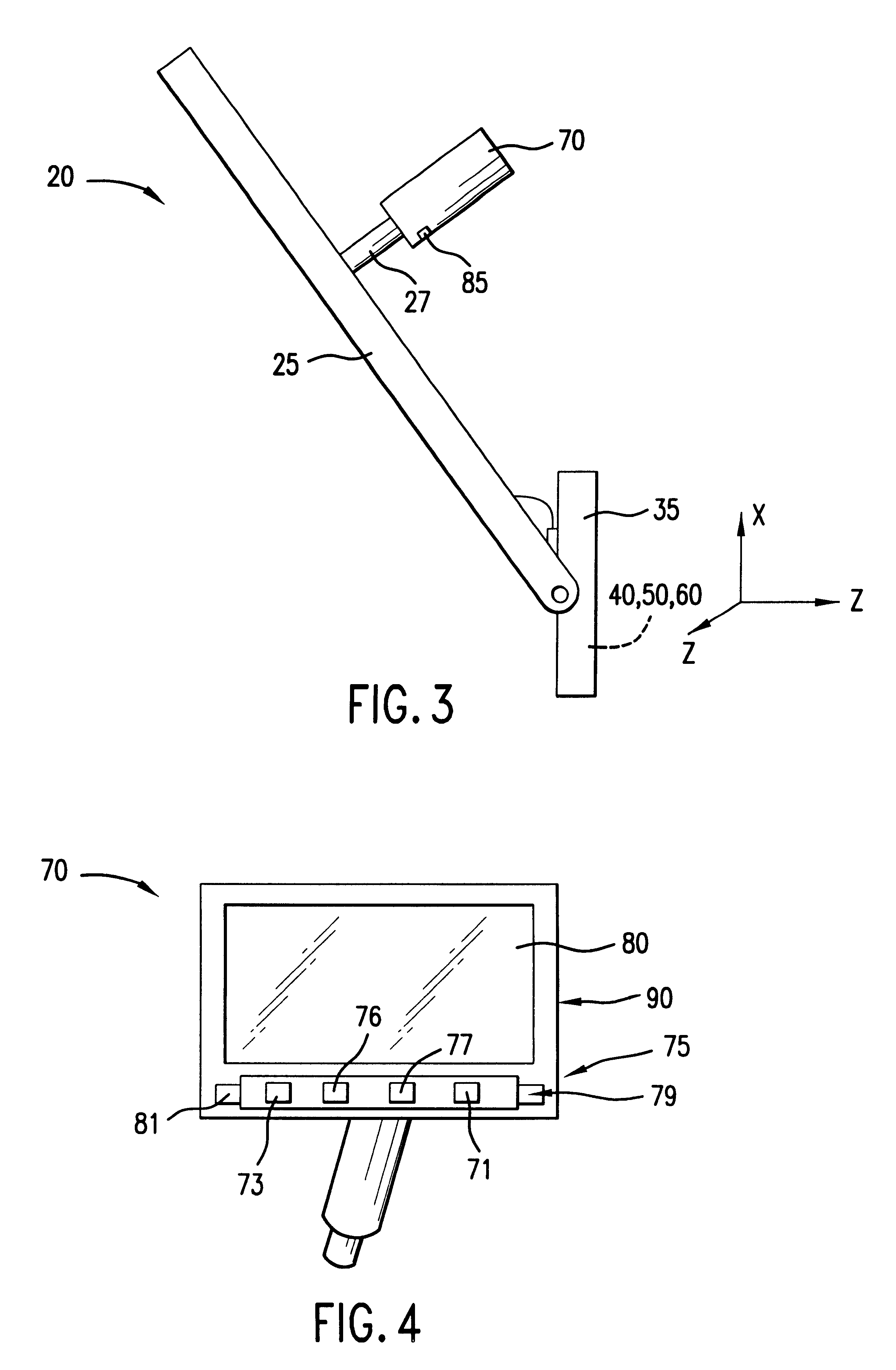Magnetic signature detector for detection of magnetic buried targets
a magnetic buried target and detector technology, applied in the direction of electric/magnetic detection for transportation, using reradiation, instruments, etc., can solve the problems of clutter, plastic pipes, undetectable with traditional underground pipeline location methods, prior art magnetic buried magnetic objects do not have the capability to discriminate against other buried magnetic objects,
- Summary
- Abstract
- Description
- Claims
- Application Information
AI Technical Summary
Benefits of technology
Problems solved by technology
Method used
Image
Examples
Embodiment Construction
Locator 20 for measuring and detecting a magnetic signature of a magnetically detectable object from a distance is shown schematically in FIG. 1. Portable sensor group 30 is positioned within locator 20 for detecting the magnetic signature. Portable sensor group 30 preferably comprises three gradient sensors 40, 50 and 60. Each of the three gradient sensors 40, 50, 60 are preferably adapted to independently measure both a magnitude and a direction of the magnetic signature. A signal output device 70 is also connected to each of the three gradient sensors 40, 50, 60.
As used in the specification and claims, a gradient sensor is a sensor that collects signals from two distinct locations. Therefore, as shown in FIG. 1, an X gradient is measured by the difference between X1 and X2; a Y gradient is measured by the difference between Y1 and Y2; and a Z gradient is measured by the difference between Z1 and Z2. As shown schematically in FIG. 2, a first of said gradient sensors 40 preferably ...
PUM
 Login to View More
Login to View More Abstract
Description
Claims
Application Information
 Login to View More
Login to View More - R&D
- Intellectual Property
- Life Sciences
- Materials
- Tech Scout
- Unparalleled Data Quality
- Higher Quality Content
- 60% Fewer Hallucinations
Browse by: Latest US Patents, China's latest patents, Technical Efficacy Thesaurus, Application Domain, Technology Topic, Popular Technical Reports.
© 2025 PatSnap. All rights reserved.Legal|Privacy policy|Modern Slavery Act Transparency Statement|Sitemap|About US| Contact US: help@patsnap.com



